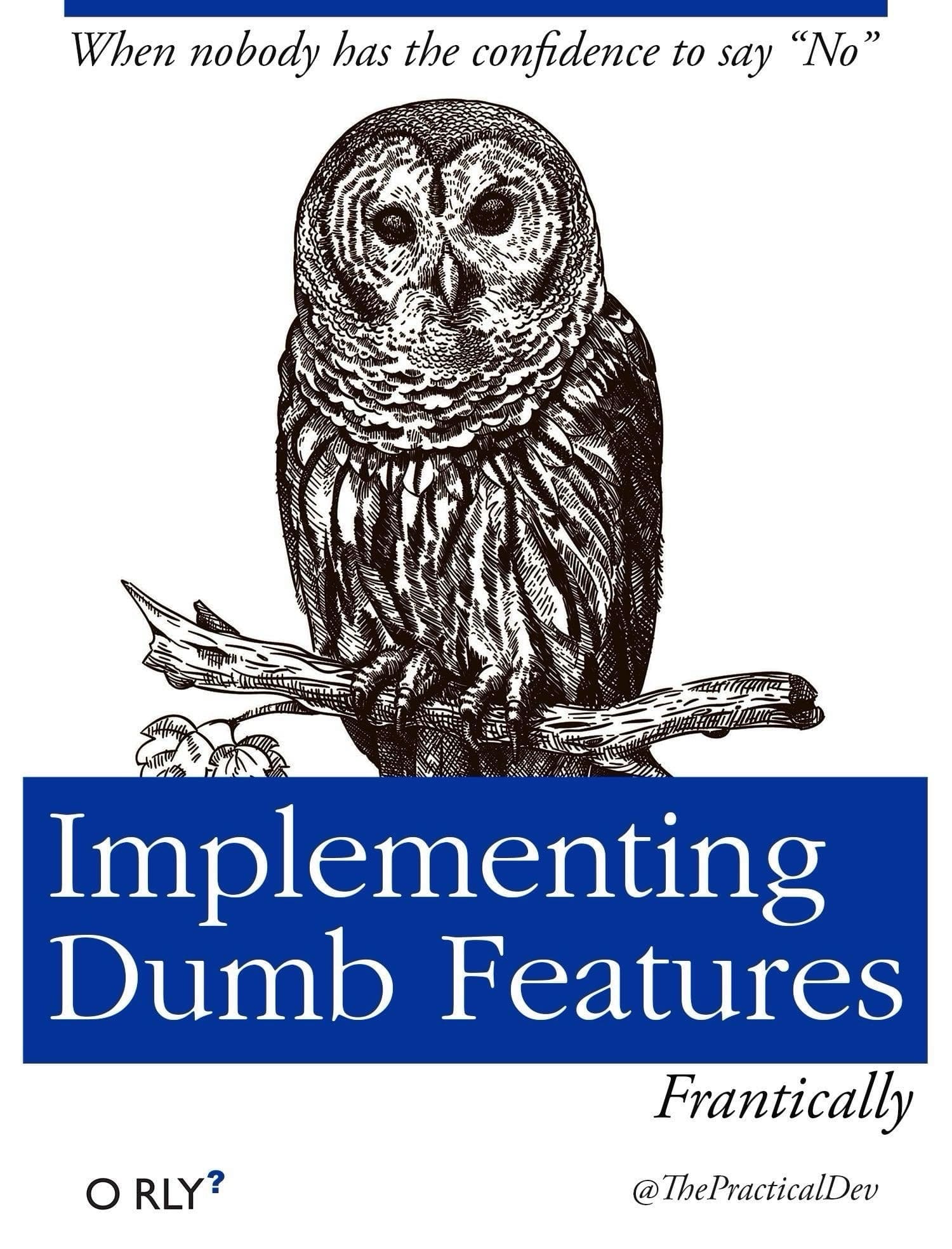
In the bustling tech hub of Featureton, a place where ideas flow as freely as the coffee in its numerous cafes, there existed a phenomenon known to all within the software industry: Implementing Dumb Features. This curious situation arose not from a lack of talent or dedication among the city's developers but from a collective hesitation to voice a pivotal word in the realm of innovation: "No."
Our story revolves around a development team at InnoSoft, a company celebrated for its cutting-edge applications and client-centric approach. The team, a vibrant mix of seasoned veterans and eager newcomers, prided themselves on their ability to turn visions into digital reality. However, they found themselves at a crossroads, faced with a client request that defied logic and usability: the addition of a feature so perplexing in its utility that it left the team scratching their heads in bewilderment.
The feature, as described in the client's grand vision, was a "Quantum Feedback Loop" — a mechanism designed to allow users to send feedback about the application before they had even used it, based on their anticipatory experience. The concept, riddled with paradoxes and a fundamental misunderstanding of both quantum physics and user experience, was met with incredulous stares during the client briefing.
Yet, as the meeting unfolded, a palpable tension filled the room. Each member of the team, from the lead developer to the project manager, exchanged wary glances, their minds racing with objections and concerns. But as the client waxed lyrical about the transformative potential of the Quantum Feedback Loop, a silent agreement formed among the team: challenging the idea might risk offending the client or, worse, losing the account.
Driven by a misguided commitment to customer satisfaction and a collective reluctance to confront the absurdity of the request, the team embarked on the Sisyphean task of bringing the Quantum Feedback Loop to life. Days turned into weeks, and weeks into months, as the project morphed into a quagmire of convoluted code, questionable design decisions, and a growing sense of frustration.
As the feature neared completion, the absurdity of the endeavor became impossible to ignore. The application, once a paragon of sleek functionality, was now bogged down by a feature that confounded users and developers alike. The feedback mechanism, predictably, failed to provide any actionable insights, serving instead as a perplexing curiosity that detracted from the overall user experience.
The launch of the Quantum Feedback Loop was met with confusion and criticism, a stark departure from the accolades that InnoSoft had grown accustomed to. It was a humbling moment for the team, a realization that their failure to say "No" had led them down a path of wasted resources and diminished reputation.
In the aftermath, the team at InnoSoft took stock of the lessons learned from the ordeal. They recognized the importance of open communication, both within the team and with their clients. They learned that the courage to challenge unrealistic or impractical ideas was not a detriment to client relationships but a testament to their expertise and commitment to quality.
The tale of "Implementing Dumb Features: When nobody has the confidence to say 'No'" became a cautionary story in Featureton, a reminder of the power of a single word to alter the course of development. It underscored the necessity of balancing client desires with practical reality and the importance of fostering an environment where constructive dissent is not just tolerated but encouraged.
And so, InnoSoft emerged from the experience wiser and more resilient, their commitment to excellence renewed. They vowed to approach future projects with a newfound resolve, ensuring that every feature, every line of code, served a purpose that was clear, practical, and grounded in the reality of creating exceptional digital experiences.